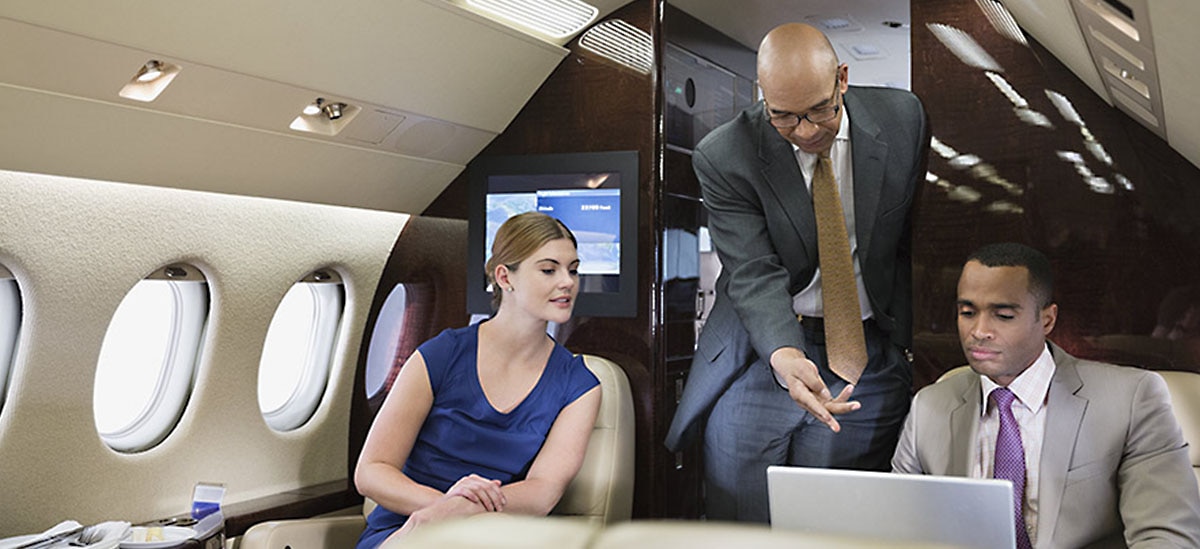
Economic uncertainty, limited inventory and high demand are continuing to drive the business aviation industry, appealing to not only corporate flight departments but to a historically high level of first-time aircraft buyers.
Faced with crowded airports, jam-packed commercial aircraft and delays, high-net-worth individuals and corporate executives alike are turning to private aviation to help relieve the time constraints and delays of commercial flying and take advantage of smaller airfields located closer to their final destinations.
Before ringing the airplane broker and kicking the tires, consider these financing options:
1. Traditional Loans
No different than your smaller purchases – like houses, cars and boats – your traditional aircraft loan can be a fixed rate or a floating rate. Some financial institutions offer hybrids, such as a floating rate loan with the option to buy a “swap.”
In other words, you can lock in your rate and benefit from early payoff and interest rate increases, which is not a bad idea in a rising rate environment. Traditional loans can be structured for as short as 30 months or as long as 120 months with amortizations as long as 240 months.
Just keep in mind, the longer the term, the higher the interest rate.
2. Asset-Based Loans
For the last fifteen years, asset-based loans have become a more popular option for individuals and businesses seeking aircraft ownership without making financial disclosures or guarantees.
Only a select number of organizations offer this product, but it has a number of benefits, including:
- No financial disclosures or covenants – Truly hassle-free asset-based financing. No need to forward years of tax returns and K-1s to disclose financials of a privately owned company.
- No, or limited, personal guaranties – This may be very important for companies that have bonding requirements or covenants limiting the amount of debt or guaranties. Multiple partners may be involved in the ownership and some owners may be unwilling to guarantee another partner’s debt.
- Non-recourse – If the borrower defaults, the lender can repossess the plane, but cannot seek out the borrower for further compensation.
3. Aircraft Leases
As with other types of large equipment, businesses may elect to lease an aircraft as an alternative to purchasing. A business may have multiple reasons to lease instead of purchase, including cash flow considerations, federal income tax considerations, sales tax considerations and accounting treatment.
There are several types of leases that are often determined by how the aircraft will be used.
Lease options include:
- Non-Tax Leases – The lessee owns the asset for tax purposes. Typically, this option is put in place for the off-balance sheet treatment. The lessee will use the aircraft only for business and has an “appetite” for tax depreciation, therefore, can take advantage of the tax benefits.
- Tax Leases – The lessor owns the asset for tax purposes, realizing the tax benefits, such as the depreciation of the aircraft. Since the lessor takes the tax benefit, the lessee is typically offered a more favorable interest rate.
How do you begin the journey to find a lender?
Often, borrowers start their financing search where they have an existing banking relationship. However, that may not always be your best financial option.
General aviation industry knowledge should be an important consideration when choosing a lender for private aircraft.
Does your lender have:
- Expertise with FAA requirements?
- Experience staying up to date with regulations that could impact your private aircraft purchase?
- An established specialty in aircraft financing?
- Credentials with key trade associations, like the National Business Aviation Association (NBAA), International Aircraft Dealers Association (IADA), or National Aircraft Finance Association (NAFA)?
If you don’t know, aircraft brokers and dealers, aviation attorneys and aircraft managers are a good source for referrals and recommendations.
Contact us to see how PNC Aviation Finance can help you fly higher.




